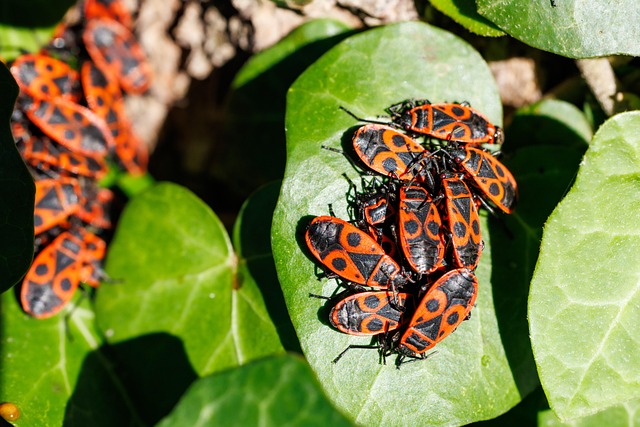Cigarette beetles, tiny but damaging pests, infiltrate homes and businesses through dark spaces. Preventative measures like cleanliness, sealing entry points, and regular inspections are key to avoiding infestations. Natural or chemical pest control for cigarette beetles offers solutions, with natural oils providing safe alternatives and pyrethrins/fipronil insecticides for severe cases. Integrated Pest Management (IPM) combines preventive tactics, cleaning, storage improvements, and early detection for long-term protection against these versatile pests.
Cigarette beetles can infiltrate homes, causing significant damage to stored items like clothes, books, and textiles. Understanding their behavior and life cycle is key to effective prevention and treatment. This guide explores affordable and reliable solutions for combating these persistent pests, focusing on natural remedies, chemical treatments, and long-term environmental management. Discover practical strategies to implement pest control for cigarette beetles, ensuring a beetle-free haven without breaking the bank.
Understanding Cigarette Beetles: Behavior and Damage
Cigarette beetles, despite their name, are not limited to cigarettes but can infest a variety of stored products and materials in homes and businesses. These tiny insects, often measuring just 1-4 mm in length, are skilled invaders that target dried herbs, spices, wood, fabrics, and even paper products. Their elusive nature and ability to thrive in dark, narrow spaces make them challenging to detect until significant damage has been done.
Recognizing their behavior is crucial for effective pest control for cigarette beetles. They typically lay eggs in crevices and cracks, and the larvae feed on organic matter, burrowing through materials as they grow. The adults can live for several months, during which time they mate and continue to infest new areas. To prevent and mitigate cigarette beetle damage, understanding their life cycle and preferred habitats is key, guiding the implementation of tailored pest control solutions.
Affordable Prevention Strategies for Homeowners
Preventing an infestation is always more affordable and less disruptive than treating one. For homeowners dealing with cigarette beetles, there are several cost-effective strategies to implement. Start by ensuring your home is clean and free of debris, as these insects are attracted to organic materials left undisturbed. Regularly vacuum and dust, paying special attention to corners and crevices where beetle larvae may hide. Repair any cracks or gaps in walls or floors, as these entry points can be easily sealed with caulk.
Another effective prevention method is to maintain a clean environment, especially in areas where cigarette beetles proliferate, such as attics and storage spaces. Keep items like clothing, boxes, and wooden furniture off the floor and use airtight containers for storing materials like paper products or cedar shavings. Regularly inspect these areas for any signs of an existing infestation, addressing them immediately to prevent further escalation. Implementing these simple yet effective practices can go a long way in safeguarding your home from cigarette beetles and avoiding costly pest control for cigarette beetles.
Effective Natural and Chemical Treatments
Cigarette beetle infestations can be a significant concern, but there are effective natural and chemical treatments available for comprehensive pest control for cigarette beetles. Natural remedies often involve using essential oils like neem oil or tea tree oil, which have insecticidal properties and can deter these pests. These organic solutions are safe for use around humans and pets and can be particularly useful for those seeking environmentally friendly options.
For more severe cases, chemical treatments offer rapid and reliable results. Insecticides containing pyrethrins or fipronil are effective in eliminating cigarette beetles. However, it’s crucial to follow the product instructions carefully and ensure proper ventilation during application to avoid potential health risks. Professional pest control services can also provide tailored solutions, ensuring a thorough and long-lasting fix for your cigarette beetle problem.
Long-term Management: Maintaining a Beetle-Free Environment
To achieve long-term management and maintain a beetle-free environment, it’s crucial to implement integrated pest management (IPM) strategies for cigarette beetles. This involves a combination of preventive measures, monitoring, and targeted treatments. Regular cleaning and sanitizing of areas prone to cigarette beetle infestation is essential, as these pests are attracted by organic materials and scents. Maintaining proper storage conditions, especially in warehouses and retail spaces, can significantly reduce the risk of an outbreak.
Additionally, using pest control traps and pheromone monitoring systems can help detect early signs of a beetle presence. Professional pest control services specializing in cigarette beetles can also provide tailored solutions that include safe and effective treatments. By adopting these comprehensive strategies, businesses within the tobacco industry or those dealing with susceptible materials can effectively manage and prevent cigarette beetle infestations, ensuring a safer and more sanitary environment.
In addressing the challenge of cigarette beetle infestations, understanding their behavior and implementing effective prevention strategies is key. The article has explored affordable and reliable solutions, from natural treatments to chemical interventions, empowering homeowners with a comprehensive toolkit for management. By adopting these measures, individuals can effectively mitigate and prevent cigarette beetle damage, ensuring a pest-free environment. For persistent issues, long-term management techniques offer a sustainable approach to keeping these pests at bay, enhancing the overall quality of living spaces. Remember, proactive measures are key in the world of pest control for cigarette beetles.
